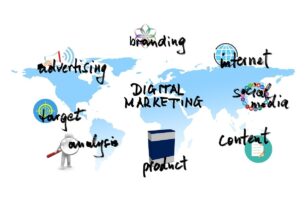Hey, business bloggers! If you’re looking for a surefire way to establish your blog as a valuable resource and boost your online presence, evergreen content is the secret sauce. In this guide, we’ll dive into the art of creating evergreen content – a long-term strategy that keeps your blog relevant and engaging for years to come.
1. What Is Evergreen Content?
Evergreen content is information that remains valuable and relevant to your audience long after it’s been published. It doesn’t expire like news articles or trend-based posts. Instead, it addresses timeless topics and common questions.
2. Research Your Audience
Understanding your audience’s needs and pain points is the first step. What questions do they consistently ask? What problems do they need solutions for? Tailor your evergreen content to address these issues.
3. Keyword Research
Conduct in-depth keyword research to identify the most relevant and popular keywords in your niche. Evergreen content often ranks well for these keywords, driving consistent organic traffic.
4. Comprehensive Guides
Create comprehensive guides or tutorials. These in-depth resources provide valuable information that your audience can refer back to whenever they need it.
5. Timeless How-Tos
Write “how-to” articles or guides that explain a process, task, or skill. Evergreen how-tos remain valuable as long as the process or task exists.
6. Listicles and Topical Roundups
Listicles and roundups, such as “Top 10 Tips” or “20 Must-Have Tools,” are evergreen because they cover a range of valuable information in one place.
7. Beginner’s Guides
Create beginner’s guides to introduce newcomers to your industry or topic. This foundational content is always relevant for those starting their journey.
8. Troubleshooting and Problem-Solving
Address common problems and provide solutions. Readers often turn to the internet to troubleshoot issues, making problem-solving content evergreen.
9. Historical Context and Background
Articles that provide historical context, background information, or overviews of industry trends remain relevant over time.
10. Glossaries and Definitions
Glossaries or articles that define key industry terms and jargon are timeless references.
11. Keep It Updated
While evergreen content is designed to be long-lasting, it’s essential to keep it updated. Regularly review and refresh your evergreen posts to ensure they remain accurate and relevant.
12. Promote Evergreen Content
Evergreen content deserves a prominent place in your content promotion strategy. Share it on social media, include it in email newsletters, and link to it from new blog posts.
13. Monitor Performance
Track the performance of your evergreen content over time. Identify which pieces continue to attract traffic and which might need further updates.
14. Encourage Engagement
Encourage readers to engage with your evergreen content by asking questions, prompting discussions, and offering further resources.
15. Link Building
Evergreen content is excellent for building backlinks. Quality backlinks can boost your blog’s authority and search engine rankings.
16. Consider Ebooks or Downloadable Resources
Transform your evergreen content into downloadable resources like ebooks or PDF guides. This extends its reach and usefulness.
In conclusion, creating evergreen content is a long-term strategy that positions your business blog as an invaluable resource. By providing timeless and comprehensive information, you’ll attract and retain readers, boost your online presence, and establish your blog as an authority in your field. So, start crafting evergreen content that stands the test of time!







